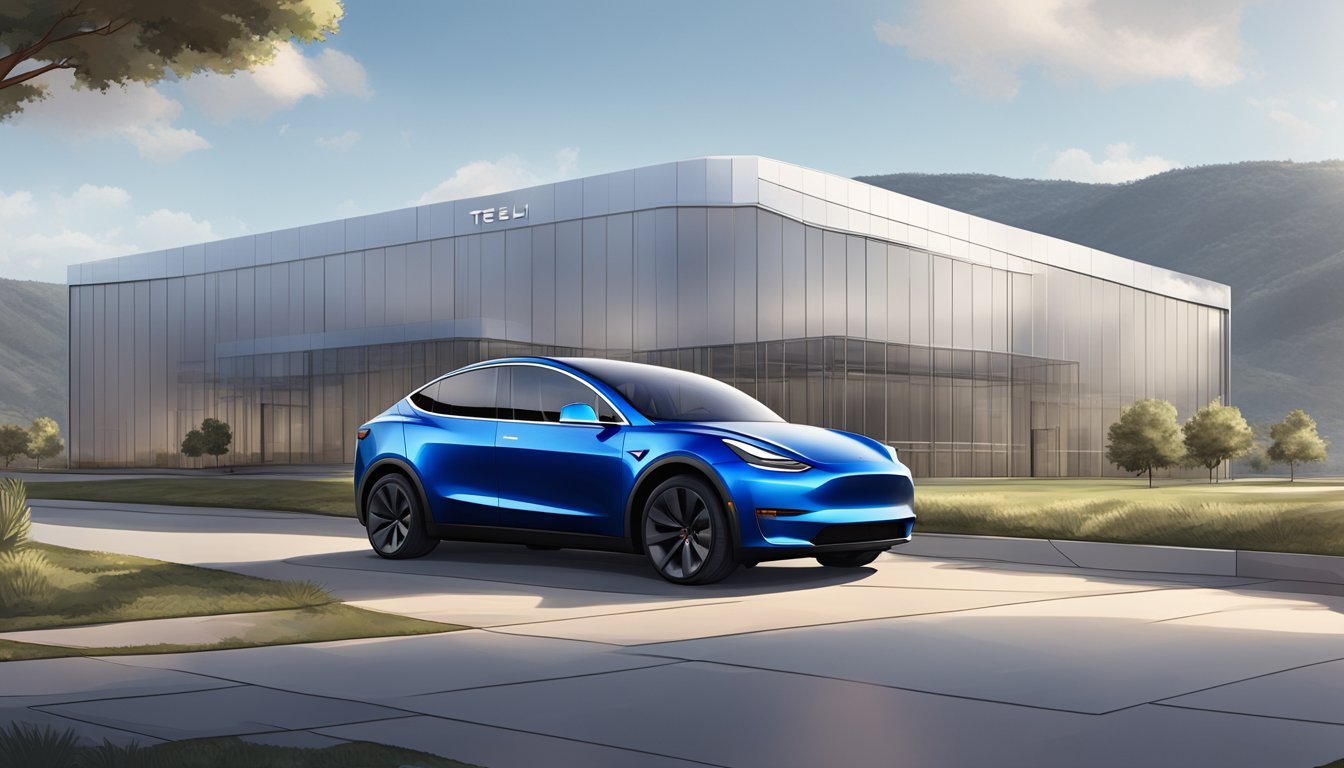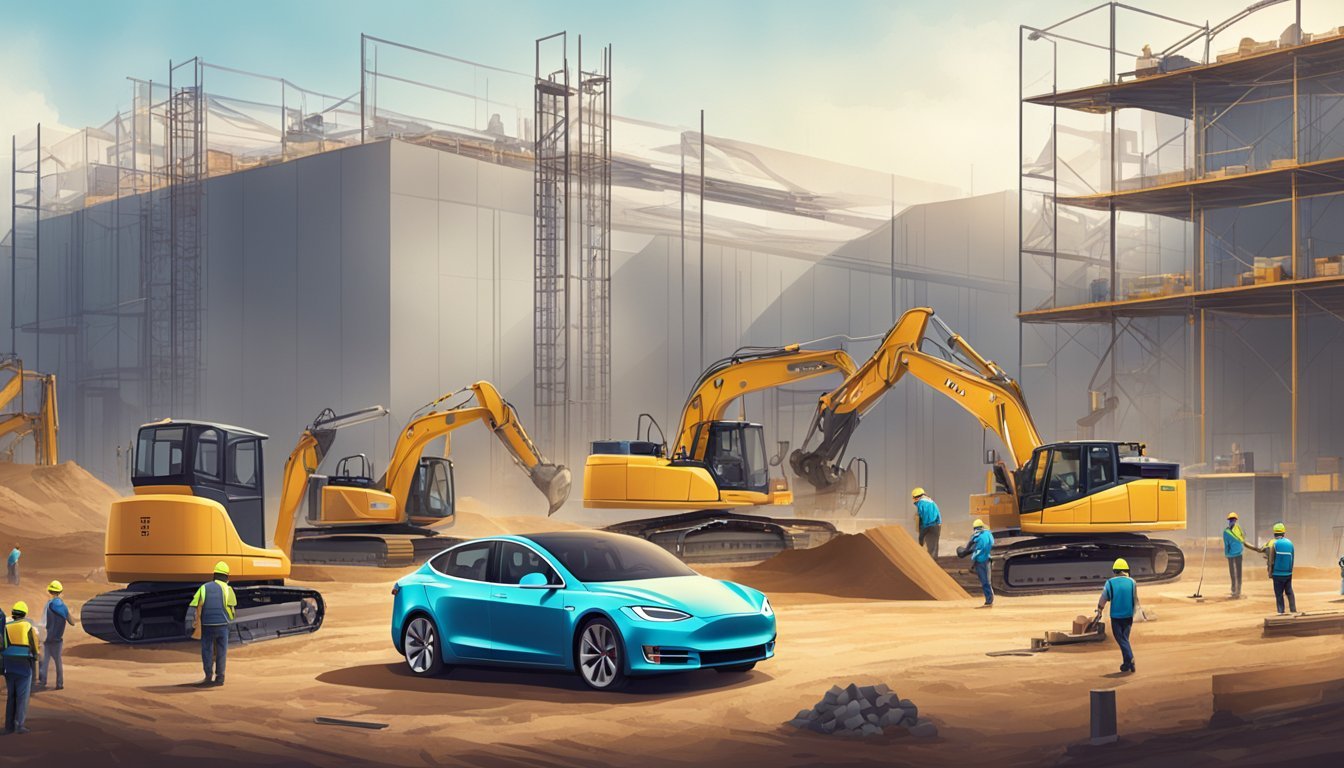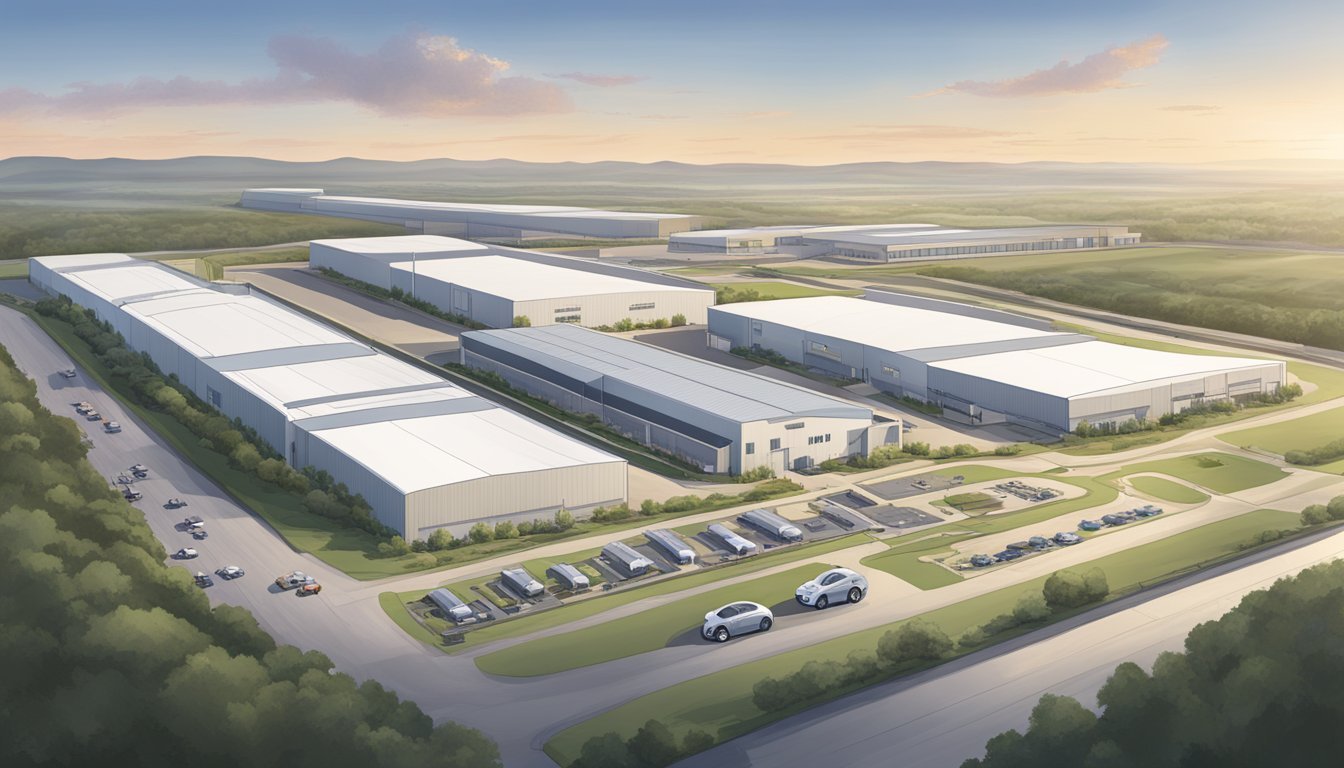Tesla Austin Cost Skyrockets: Gigafactory Price Tag Hits $10 Billion!
Tesla's Austin Gigafactory represents a significant investment in the company's manufacturing capabilities. Located near the airport on the eastern outskirts of Austin, Texas, this facility serves as Tesla's global headquarters and a key production hub for the Model Y and Cybertruck.
The Austin Gigafactory is projected to cost Tesla approximately $10 billion, according to statements made by CEO Elon Musk. This figure far exceeds initial estimates, which placed the cost at around $1.1 billion. The substantial increase in investment highlights Tesla's commitment to expanding its production capacity and solidifying its position in the automotive industry.
Construction of the Austin Gigafactory began in July 2020, with limited production of the Model Y starting before the end of 2021. The facility's rapid development and ambitious scope demonstrate Tesla's aggressive growth strategy and its focus on increasing manufacturing efficiency. As the company continues to ramp up production at this site, the Austin Gigafactory is poised to play a crucial role in Tesla's future operations and product lineup.
Tesla's Impact on Austin
Tesla's Gigafactory in Austin has significantly influenced the city's economy and workforce. The facility has spurred substantial investment and job creation while contributing to local tax revenues.
Economic Implications
Tesla's presence in Austin has generated notable economic activity. Since 2020, the company has paid $15 million in taxes to Travis County and over $49 million to Del Valle ISD. The Gigafactory's economic impact is estimated at $2 billion.
Tesla's investment has stimulated growth in related industries and attracted other businesses to the area. This influx of capital has boosted local real estate values and increased demand for services.
The company's tax contributions have provided additional funds for public services and infrastructure improvements in Austin and surrounding areas.
Local Community and Employment
Tesla's Gigafactory has created thousands of jobs in Austin. The facility employs approximately 15,000 people, significantly impacting the local labor market.
In 2022, Tesla paid $469 million in wages at its Austin facility, with an average salary of $74,206. This figure rises to $131,020 when including equity offered to employees through company shares.
The influx of Tesla employees has increased demand for housing, retail, and services in the Austin area. This growth has created additional employment opportunities across various sectors.
Tesla has also implemented training programs and partnerships with local educational institutions, enhancing the skills of the local workforce.
Overview of Gigafactory Texas
Tesla's Gigafactory Texas represents a major manufacturing hub and the company's global headquarters. The massive facility near Austin focuses on vehicle production and technological innovation.
Factory Specifications
Gigafactory Texas spans approximately 2,500 acres near Austin's airport. The facility's construction began in summer 2020, with an initial investment of $1.06 billion. Tesla received about $65 million in local tax rebates for the project. The factory's strategic location on the eastern outskirts of Austin provides logistical advantages for production and distribution.
Manufacturing Capabilities
The Austin Gigafactory boasts significant production capacity. It can manufacture up to 375,000 vehicles annually. This high-volume capability allows Tesla to meet growing demand for its electric vehicles. The facility employs advanced automation and cutting-edge manufacturing techniques to optimize production efficiency. Tesla projected the creation of around 10,000 jobs at the site, primarily in manufacturing roles.
Tesla Gigafactory's Products
Gigafactory Texas produces multiple Tesla vehicle models. The facility serves as a key manufacturing center for the Model Y, Tesla's popular electric SUV. It also handles production of the highly anticipated Cybertruck. This diversified product lineup allows Tesla to leverage the factory's capabilities across different vehicle segments. The Gigafactory's output contributes significantly to Tesla's overall production goals and market presence in North America.
Cost of Construction and Production
Tesla's Austin Gigafactory represents a major investment in manufacturing capacity. The project involves significant construction costs, ambitious production targets, and an accelerated timeline for completion.
Construction Budget and Funding
Tesla plans to spend over $1 billion on its new vehicle factory in Austin, Texas. This substantial investment aligns with the company's strategy of rapidly expanding production capabilities. The construction budget covers various aspects of the facility, including manufacturing areas, office spaces, and infrastructure improvements.
Tesla has not disclosed specific funding sources for the project. The company likely utilizes a combination of cash reserves, revenue from vehicle sales, and potentially external financing to support the massive undertaking. The billion-dollar price tag underscores Tesla's commitment to establishing a major manufacturing presence in Texas.
Production Efficiency and Cost-Savings
The Austin Gigafactory aims to incorporate advanced manufacturing techniques and automation to boost production efficiency. Tesla's experience from previous Gigafactory projects informs the design and layout of the new facility. The company focuses on streamlining production processes to reduce costs and increase output.
Key efficiency measures may include:
Vertical integration of component manufacturing
Advanced robotics and automation systems
Optimized assembly line configurations
Energy-efficient building systems
These initiatives can potentially lead to significant cost savings in vehicle production over time.
Factory Construction Timeline
Tesla set an ambitious timeline for the Austin Gigafactory, targeting completion of major construction elements by December 31, 2024. The accelerated schedule reflects the company's urgency to increase production capacity for its growing vehicle lineup.
Key timeline points:
Construction start: July 2020
Initial production: Late 2021
Ongoing expansion and refinement: 2022-2024
The Texas Department of Licensing and Regulation oversees various aspects of the project's progress. Tesla's approach involves building the factory in phases, allowing for partial operation while construction continues in other areas. This strategy enables the company to begin manufacturing in completed sections while expanding the facility.
Technological Innovations at Giga Texas
Tesla's Giga Texas facility showcases cutting-edge advancements in electric vehicle production. The factory incorporates state-of-the-art technologies to enhance efficiency, sustainability, and manufacturing capabilities.
Battery Production Advancements
The Giga Texas plant features a dedicated battery cell production line. This includes the manufacturing of Tesla's innovative 4680 cells. These larger, more energy-dense batteries promise increased range and power for Tesla vehicles.
A cell test lab on-site ensures quality control and performance optimization. The facility also houses advanced cathode production capabilities, reducing reliance on external suppliers.
Tesla's partnership with Panasonic continues at Giga Texas, leveraging their combined expertise in battery technology.
Sustainability and Energy Efficiency
Giga Texas integrates numerous sustainable energy solutions. The factory's roof is equipped with extensive solar panel arrays, generating clean electricity for operations.
Advanced water recycling systems minimize water consumption. Tesla implemented energy-efficient lighting and climate control throughout the facility.
The plant's design incorporates natural lighting and ventilation where possible, further reducing energy needs. Electric vehicle charging stations powered by on-site renewable energy serve both employees and visitors.
Automated Manufacturing Processes
Giga Texas boasts highly automated production lines. Advanced robotics handle tasks from body assembly to painting, ensuring precision and consistency.
Machine learning algorithms optimize production flow and identify potential issues before they occur. Automated guided vehicles (AGVs) transport components efficiently throughout the facility.
The factory utilizes advanced 3D printing for rapid prototyping and tooling. Vision systems and AI-powered quality control ensure each vehicle meets Tesla's exacting standards.
These automated processes significantly boost production capacity while maintaining high quality standards.
Tesla's Vehicle Production Lines in Austin
Tesla's Gigafactory Texas houses advanced production lines for multiple vehicle models. The facility incorporates cutting-edge manufacturing processes and automation to streamline assembly.
Model Y Production
The Model Y production line at Giga Texas is highly automated. It features robotic arms that handle tasks like welding, painting, and assembly. The line uses a single-piece rear casting, simplifying production and reducing parts.
Tesla's innovative "Gigapress" machines produce these large aluminum castings. The streamlined process allows for faster production cycles and improved quality control.
The general assembly area combines the battery pack, powertrain, and body. Advanced conveyor systems move vehicles efficiently between stations.
Cybertruck and Tesla Semi
Giga Texas is slated to produce the Cybertruck and Tesla Semi. The Cybertruck line will utilize specialized equipment to handle its unique stainless steel exoskeleton.
Custom tooling and welding robots are being installed to manage the vehicle's angular design. The Semi production area will accommodate the truck's larger size and heavier components.
Both lines are expected to incorporate lessons learned from Model Y production to maximize efficiency.
Paint, Stamping, and Casting Processes
The paint shop at Giga Texas uses advanced robotics and multi-layer application techniques. It ensures consistent, high-quality finishes across all models.
Stamping operations employ massive presses to form body panels. The process is highly automated, with robots handling material transfer.
Giga Texas houses multiple Gigapress machines for large-scale die casting. These produce single-piece rear and front underbody sections, significantly reducing part count and assembly time.
The casting area is designed for expansion, allowing Tesla to increase capacity as demand grows.
Tesla's Global Manufacturing Strategy
Tesla's global manufacturing approach focuses on building Gigafactories in strategic locations worldwide. This strategy aims to optimize production, reduce costs, and improve delivery times for its electric vehicles and energy products.
Comparative Analysis with Berlin and Shanghai
Tesla's Austin Gigafactory shares similarities with its counterparts in Berlin and Shanghai. All three facilities utilize advanced automation and innovative manufacturing techniques. The Austin plant, like Berlin, incorporates large-scale die-casting machines for producing vehicle frames.
Shanghai's Gigafactory has set benchmarks for production efficiency, which Austin aims to match or exceed. Each facility is tailored to regional market demands and regulations.
Austin's Gigafactory produces the Model Y, with plans to manufacture the Cybertruck. Berlin focuses on Model Y production for the European market, while Shanghai produces Model 3 and Model Y vehicles.
Scaling Production and Distribution
Tesla's multi-Gigafactory approach enables rapid scaling of production and distribution. The Austin facility plays a crucial role in meeting North American demand.
By localizing production, Tesla reduces shipping costs and delivery times. This strategy aligns with Elon Musk's vision of accelerating the world's transition to sustainable energy.
The Austin Gigafactory incorporates lessons learned from previous facilities, allowing for faster ramp-up and improved efficiency. Its central U.S. location facilitates distribution across North America.
Tesla aims to increase production capacity at all Gigafactories, with Austin expected to play a significant role in achieving the company's ambitious growth targets.
Collaboration and Competition
Tesla's global manufacturing strategy involves collaboration with local suppliers and technology partners. The Austin Gigafactory works with regional businesses to source components and materials.
The company also faces competition from established automakers and new EV startups. To maintain its edge, Tesla continues to innovate in manufacturing processes and vehicle design.
Tesla's drive unit production is a key focus across all Gigafactories, including Austin. The company's vertical integration strategy allows for greater control over critical components.
As the EV market expands, Tesla's global network of Gigafactories positions the company to compete effectively in multiple regions simultaneously.







